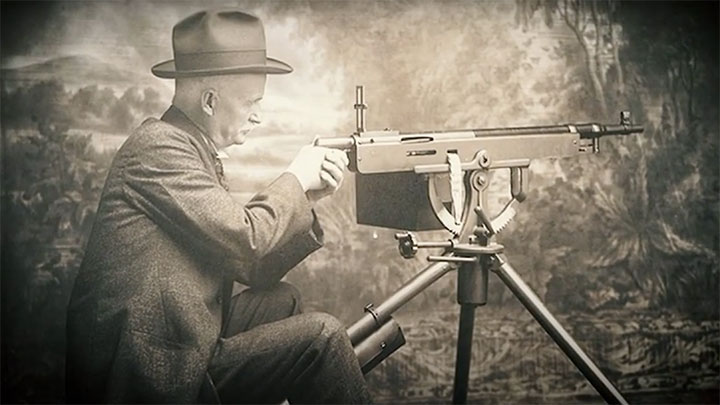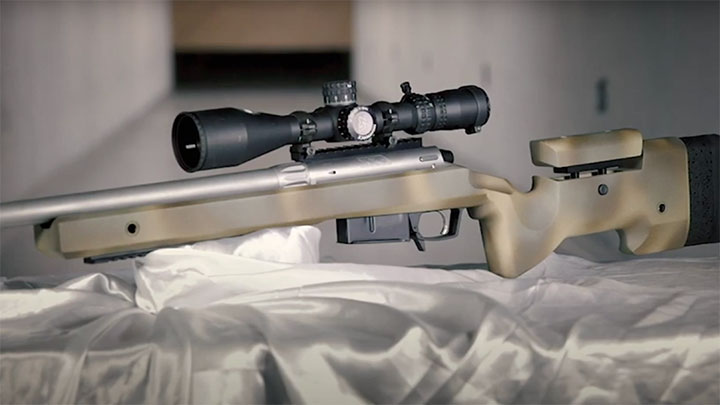In this week's episode of American Rifleman TV, we continue going through our picks for the top 10 machine guns of all time. We start with No. 8, the Colt M1895 “Potato Digger” belt-fed, and No. 7, the Lewis drum-fed light machine gun. On "Rifleman Review," we take a look at the McMillan Z-1 rifle stock paired with a Rock River Arms bolt-action barreled receiver. On "I Have This Old Gun," we examine the German Gewehr 1888 Commission Rifle.

Continuing with American Rifleman picks for the top 10 machine guns of all time, at No. 8 is the United States's first gas-operated, belt-fed machine gun, the Colt M1895 "Potato Digger". Designed by John Moses Browning, the M1895 uses a swinging action arm driven by gas from the barrel to cycle the action. The wide downward swing of the action arm is what earned the M1895 the nickname of "Potato Digger" from U.S. troops.

At No. 7 is the Lewis light machine gun. Designed by U.S. Army officer Issac Newton Lewis and based off the previous McClean machine gun design, the Lewis Gun is operated by a gas piston and fed from a top-mounted drum magazine that is spun by the action. The Lewis uses a winding main spring and a large barrel shroud to ventilate heat. The design was initially passed over by the U.S. During World War I, but adopted by the British where it became their principle light machine gun for the war.

McMillan Fiberglass Stocks is a company that has earned a well known reputation for well made precision rifle stocks. The Z-1 stock is the first in a new line of universal-fit fiberglass stocks from McMillan. The stock is inletted in such a way that it can accommodate any Remington style barreled action with any barrel profile without issue. Here it is tested with a Rock River Arms RBG barreled action installed.

The Gewehr 1888 Commission Rifle is a bolt-action rifle fed by a five-round internal magazine. Instead of previous Mauser bolt-action rifle designs, the Gewehr 88 was Germany's first bolt-action military rifle to use smokeless-powder cartridges. The increased pressure generated by the new smokeless propellant required a new locking system on the bolt to withstand the pressure when fired.
The design was given a new locking system for the time in which which two locking lugs at the front of the bolt indexed with the receiver ring, designed by a gunsmith at Spandau Arsenal. This new locking lug arrangement was far stronger than what had come before and would ultimately be a key design feature that was carried over into the highly successful and well known Mauser 1898 bolt-action design.
To watch complete segments of past episodes of American Rifleman TV, go to americanrifleman.org/artv. For all-new episodes of ARTV, tune in Wednesday nights to Outdoor Channel 8:30 p.m. and 11:30 p.m. EST.




![Winchester Comm[94]](/media/1mleusmd/winchester-comm-94.jpg?anchor=center&mode=crop&width=770&height=430&rnd=134090756537800000&quality=60)
![Winchester Comm[94]](/media/1mleusmd/winchester-comm-94.jpg?anchor=center&mode=crop&width=150&height=150&rnd=134090756537800000&quality=60)

















